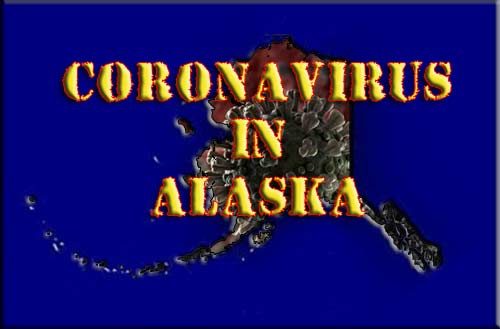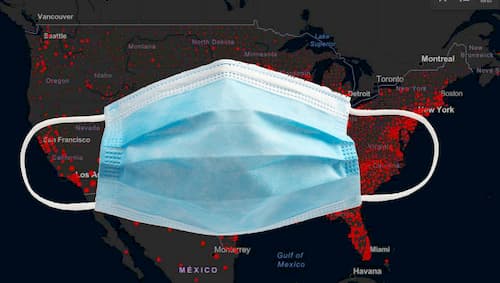Changes to the alert level system used to inform communities about what COVID-19 looks like in their area are now live. These changes to Alaska’s alert system will better align with CDC’s levels of transmission, make it more sensitive to recent changes in the number of reported COVID-19 cases, and provide more locally relevant information. More detailed information about the changes can be found at dhss.alaska.gov/dph/epi/id/pages/COVID-19/alertlevels.aspx
OVERVIEW – 406 new cases | 3 deaths | 126 hospitalizations | Statewide alert level: high | 53.1% of Alaskans 12+ vaccinated
TAKE ACTION – Choosing to get vaccinated is the single most important action you can take to protect yourself and your community and to reopen our economy. Learn more about the CDC’s recommendations for fully vaccinated people, including their recent change to masking guidance, at www.cdc.gov/coronavirus/2019-ncov/vaccines/fully-vaccinated.html.
VACCINATIONS – 58.9% of Alaskans age 12 and older have received at least their first vaccine dose.
53.1% of Alaskans 12 and older have been fully vaccinated. The higher the vaccination rate, the more protected community members are from COVID-19. See below for percentages of all fully vaccinated Alaskans age 12 and older by region:
- Juneau Region: 74.9%
- YK-Delta Region: 70.7%
- Other Southeast Region – Northern: 69.4%
- Southwest Region: 63.7%
- Other Southeast Region – Southern: 62.5%
- Northwest Region: 57.8%
- Anchorage Region: 55%
- Other Interior Region: 54.1%
- Fairbanks North Star Borough: 46.9%
- Kenai Peninsula Region: 45.1%
- Matanuska-Susitna Region: 37.2%
For more information about vaccines, visit covidvax.alaska.gov.
CASES – DHSS today announced three Alaska resident deaths and 406 new people identified with COVID-19 in Alaska yesterday. 378 were residents in: Anchorage (139), Ketchikan (35), Eagle River (21), Haines (19), Fairbanks (18), Juneau (17), Kodiak (13), Kenai (12), Soldotna (11), Chugiak (10), Wasilla (9), North Pole (8), Palmer (8), Homer (5), Sitka (4), Utqiaġvik (4), Valdez (4), Yukon-Koyukuk Census Area (4), Anchor Point (3), Craig (3), Prince of Wales-Hyder Census Area (3), Dillingham Census Area (2), Ketchikan Gateway Borough (2), Nikiski (2), NW Arctic Borough (2), and one each in Bethel Census Area, Bristol Bay/Lake and Peninsula, Dillingham, Fairbanks North Star Borough, Healy, Hooper Bay, Kenai Peninsula Borough – South, Kenai Peninsula Borough – North, Kodiak Island Borough, Kotzebue, Kusilvak Census Area, Mat-Su Borough, Metlakatla, Nome Census Area, Seward, Skagway, Sterling, Sutton-Alpine, Tok, and one location under investigation.
28 new nonresident cases were identified in:
- Anchorage: 2 with purpose “other”, 10 with purposes under investigation
- Kodiak: 4 with purpose seafood
- Juneau: 3 with purposes under investigation
- Fairbanks: 2 with purposes under investigation
- Petersburg: 2 with purposes under investigation
- Soldotna: 2 with purposes under investigation
- Denali Borough: 1 with purpose tourism
- Sitka: 1 with purpose under investigation
- Wasilla: 1 with purpose “other”
Two resident cases were subtracted and one nonresident case was added to the dashboard due to data verification procedures bringing the total number of Alaska resident cases to 76,030 and the total number of nonresident cases to 3,455.
HOSPITALIZATIONS & DEATHS – There have been a total of 1,788 resident hospitalizations and 395 resident deaths, with four new hospitalizations and three recent Alaska resident deaths reported. The individuals who died were:
- a Ketchikan female resident age 80+
- an Anchorage male resident in his 50s
- a Wasilla male resident in his 70s
Our thoughts are with their families and loved ones.[content id=”79272″]
There are currently 126 patients diagnosed with COVID-19 who are hospitalized and three additional patients who are considered persons under investigation (PUI) for a total of 129 current COVID-related hospitalizations. Eight of these patients are on ventilators. The percentage of patients currently hospitalized with COVID-19 is 11.3%.
TESTING – A total of 2,578,858 tests have been conducted, with 30,193 tests conducted in the previous seven days. The average percentage of daily positive tests for the previous seven days is 7.1%.
Variants of concern situation summary
Alpha (B.1.1.7) – 3 added since last report
- Proportion is appreciably declining and is less than 2% of sequenced cases in Alaska. To date, we have detected 439 cases across the state.
Gamma (P.1) – none added since last report
- To date, we have detected 73 cases across the state.
Delta (B.1.617.2-like) – 148 added since last report
- To date, we have detected 577 cases in multiple locations across the state. Accounts for almost all newly detected cases.
As of Aug. 10, the total number of Alpha (B.1.1.7) cases is 439; Gamma (P.1) cases is 73; and Delta (B.1.617.2-like) cases is 577. The weekly genomic surveillance report is online at: http://dhss.alaska.gov/dph/Epi/id/siteassets/pages/humancov/AKSeqCon_GenomicSituationReport.pdf.
ALERT LEVELS – The current statewide alert level – based on the reported number of cases per 100,000 people over the past 7 days – is high (red) at 288.8. For boroughs and census areas: 24 areas are at the high alert level (>100 cases), 2 areas are at the substantial alert level (50-99.99), 1 area is at the moderate alert level (>10-49.99) and 1 area is at the low alert level (0-9.99).
Find alert levels for individual boroughs and census areas using the alert levels map on the cases dashboard at experience.arcgis.com/experience/2d19dc2b5c7e4b399ff6495a8950493d/
Notes: Reports are received electronically, by phone and by fax. Cases are verified, redundancies are eliminated and then cases are entered into the data system that feeds into Alaska’s Coronavirus Response Hub. When there is a high number of reports being received, this may cause delays in getting reports entered and counted. Personnel continue to focus on the effort to process and count reports and minimize the delay from receipt to posting on the hub.
There is a lag between cases being reported on the DHSS data dashboard and what local communities report. Each case is an individual person even if they are tested multiple times. Total tests are a not a count of unique individuals tested and includes both positive and negative results. The current number of hospitalized patients represents more real-time data compared to the cumulative total hospitalizations. Current hospitalizations are reported for all facilities, not just general acute care and critical access facilities. Total number of hospital beds available fluctuate daily as the number of available hospital staff changes. All data reported in real-time, on a daily basis, should be considered preliminary and subject to change. To view more data visit data.coronavirus.alaska.gov.[content id=”79272″]



